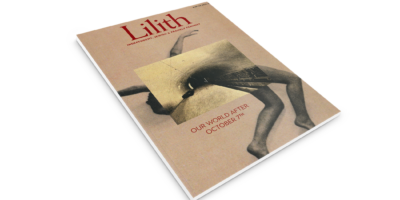
When a Notorious Criminal is “One of Us”
As a child listening to the news, I never noticed how journalists tended to report the race of a suspected criminal most typically if the person was Black, leaving it unmentioned if the criminal was white. But subliminally, this practice had two different impacts on my young brain–first, to pair criminality with Blackness and second, created the idea of whiteness as normative. As time has passed, this practice has changed, for the most part–although more insidious, subtle media patterns persist (Black victims of police violence, for instance, have been eulogized as “no angel” due to petty infractions, while white mass shooting suspects are often described by neighbors as “quiet”.)
This is why when we learn about a dangerous and/or illegal act long before we know who the suspect is, Black folk tend to hold our breath; we know that there are collective repercussions for the actions of a single one of us— whereas for those in the normative class, a person’s actions are their own.
Watching the news this last week, I have found myself holding my breath again as newscasters cover the story of the Trump Organization’s Chief Financial Officer, Allen Weisselberg, who surrendered to authorities on July 1 and is being indicted on tax-related charges. At the very notion of taxes, my mind travels back to medieval Europe, when the Christian belief was that the handling of money was dirty and sinful. While Christians would not demean themselves by handling money, European Jews, who had been excluded from guilds and prevented from owning land based on their Jewishness, and whose religion did not prevent them from handling money, became the middlemen–as tax collectors for the king and as money lenders. Both an exaggeration and reductionist history of this dynamic can be found in many places, including Shakespeare’s famous antagonist in The Merchant of Venice.
I feel preemptively defensive reading the name Weisselberg in print, knowing that some will hear it as
Weasel-berg and not Why-sel-berg.
A weasel.
I feel preemptively defensive reading the name Weisselberg in print, knowing that some will hear it as Weasel-berg and not Why-sel-berg. In quick succession, portrayals of Jews as vermin and rats fan through my head like an old frame-by-frame animation. This includes the appearance at carnival in Aalst, Belgium in 2019, of a float with big nosed Jews sitting on bags of money. Or the image of a human headed snake with a “Jewish” nose encircling the globe, one of the many variations on the cover of The Protocols of the Elders of Zion. This fictitious book, chronicling the plot of the Jews to take over the world, was first published in Russia in the early 1900’s and has been translated into dozens of languages. It was brought to the United States by Henry Ford, who published a derivative of the text in the weekly newspaper as a series, and can still be found on Walmart’s commercial site.
Tropes and conspiracy theories persist and mutate. A look at Bend the Arc’s site “How to Fight Antisemitism” provides an overview of how antisemitic tropes are being used, and how to deconstruct them. As image after image of Weisselberg comes across my screen and timeline–an image which will increase as the legal case builds–I understand that he, the Jew, is the current face of the empire, though he rules it not! We know from all the work the brain studies that are proliferating these days that, “Cells that fire together, wire together.” Here, the mirror neurons firing together fuse “Jews” with money, corruption and world domination. I note, too, the number of Jews with which Trump has surrounded himself, up to and including his son-in-law.
This is why I am ever grateful for an alternative understanding of what story is getting written here and how to make sense of it for myself and others. When I say others, I don’t just mean non-Jews here, because we are all exposed to these toxic narratives and we internalize them (for more on this please see the work of Jo Katz Kent). And the deeper I get into liberatory work, the more I understand that experience (of oppression) and analysis (of that oppression) are not the same.
In their 2017 “offering to the movement,” Jews for Racial and Economic Justice shared their understanding of antisemitism. The worlds of Aurora Levins Morales deepened some understandings I already had and braided them together. She writes (p17):
The oppression of Jews is a conjuring trick, a pressure valve, a shunt that redirects the rage of working people away from the 1%, a hidden mechanism, a set up that works through misdirection, that uses privilege to hide the gears. Unlike racism, at least some of its targets must be seen to prosper, must be well paid and highly visible. The goal is not to crush us, it’s to have us available for crushing.
My father’s mentor, Paul Torres, often spoke to my father about options. And my father spoke to us about options. I often say that options are a defining element of privilege. For example as a temporarily able-bodied person, I could opt out of many conversations during early COVID, I don’t have to ask if the building where we’re meeting has an elevator, and I don’t need to ask for closed captions on Zoom (among many other privileges). Weissleberg, too, has had options, and has made his choice to throw in his lot with the Trumps.
I do not think of him as a victim, but I am very watchful to see how this story will get used to simply and reify what dangerous myths and generalizations about who we Jews are–and to see whether Weissleberg will receive the brunt of popular disdain and disgust, shielding the company’s CEO from both criticism and consequence that are rightfully his.
Imani Romney-Rosa Chapman is one of the co-founders of imani strategies, llc. She works for an equitable world in which her children and the young people in your lives can live wholly and safely into their full humanity and where race is not a major determinant in health, wealth, legal, and educational outcomes.



